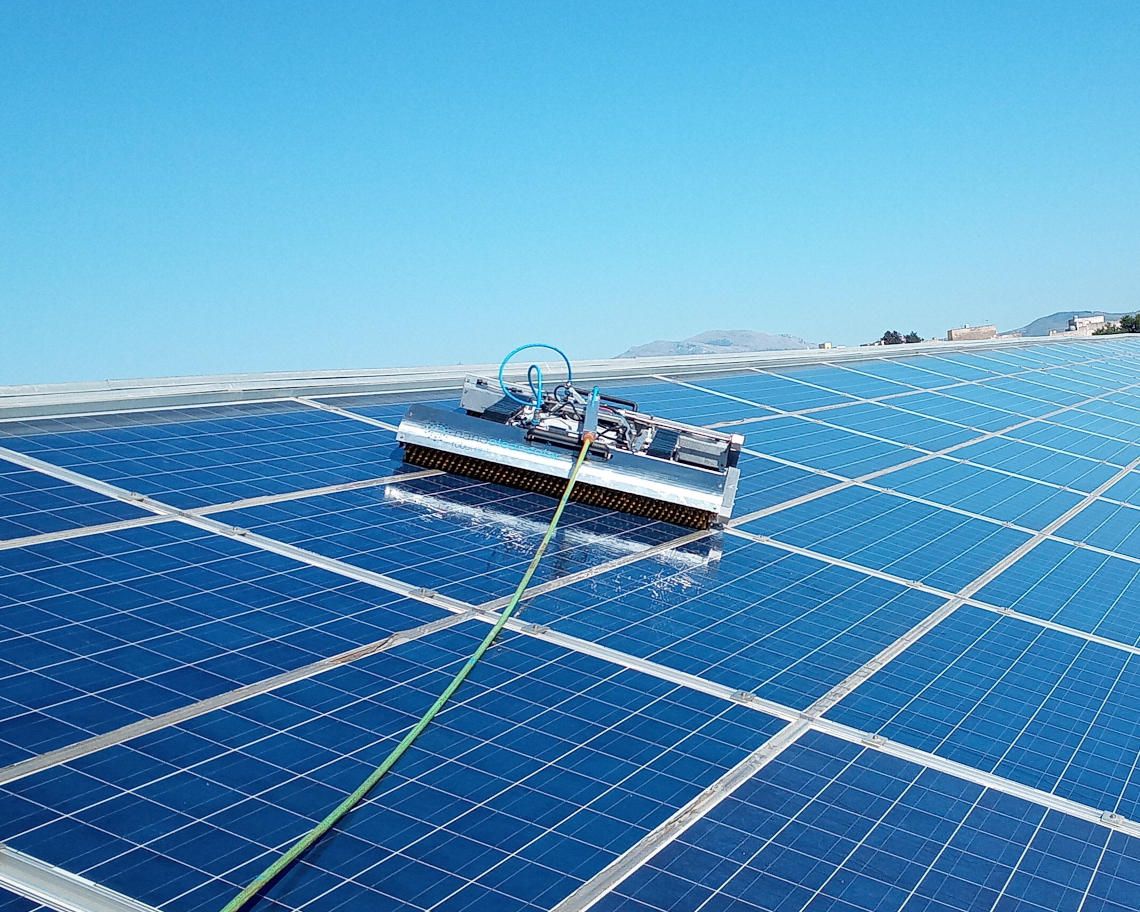It makes sense to invest in products designed to help us save time and money, create a more comfortable environment or, as in the case of photovoltaic systems, produce sustainable green electricity and increase profits in both professional and private life. However, all too often the decision to make such an investment is not accompanied by realizing the need for regular maintenance of such a product. If you buy a lawn-mower because you want to mow your lawn more quickly and comfortably, you will also incur additional costs for petrol or electricity, oil or minor repairs over time.
Dirt accumulates on the surface of all outdoor items over time due to the surrounding environment, and the same is true of solar power plants. Having cleaned their modules of the mixture of gases, water vapor and admixtures coming out of the ventilation openings in the roofs, owners appreciate the increase in the output of their PV plant by up to 30 percent or more in many cases. Based on this experience, some do not hesitate to have their solar roofs cleaned even three times a year, realizing that in their case, the self-cleaning of photovoltaic modules is ineffective.
Having cleaned their modules of the mixture of gases, water vapor and admixtures coming out of the ventilation openings in the roofs, owners appreciate an increase in the output of their PV plant by up to 30 percent or more in many cases.
The situation is different for those who run their ground-based solar power plants in a relatively clean environment. Their own monitoring may indicate no pollution of their PV plant for one or two years. Over time, however, this can change due to many different factors that cause different levels and types of pollution. In winter, these include salts, dirt and grease, while in summer it is typically pollen, petals and dust swirled by vehicles or wind. This also depends on the type of panel, its location and inclination. It is important to know that chemical reactions occur on solar panel surfaces due to the deposition of impurities. These are aggressive and quickly form a turbid surface of the module. They accumulate on the edges and in corners along the frames, with the film of impurities migrating from the bottom up and gradually increasing the level of contamination. Even a small amount of pollution facilitates the accumulation of additional deposits and results in a delayed on-switching of the system in the morning and its delayed off-switching in the evening. This is especially evident in the cold and gloomy winter months, when sunlight is no longer optimal. If parts of a solar cell are dirty, the yield of the whole module is reduced, as this part acts as a resistor in the circuit. Due to the serial connection in which the strings are connected, the overall performance is determined by the weakest module.

That is why rain or snow is so important to regularly wash away the dirt if the panels are designed for this. If there is not enough rain or snowfall, it is most advisable to have the solar panel surfaces professionally cleaned – manually or by a robot. Monitoring indicates that the measurable effect of cleaning lasts for up to two months.
Many solar module manufacturers have modified their warranty conditions over the last two years. The following quote can serve as an example: "If photovoltaic modules get damaged as a result of improper handling or failure to clean contamination, the warranty will be lost." (Source: Sonnenenergie, 3/2015). For that reason many operators of photovoltaic power plants, already budget an annual proportional amount for the maintenance and cleaning of PV plants. Operators are responsible for the safe operation of their photovoltaic systems, and therefore regular maintenance of their PV plant surface is very important, as there is no indemnity in case of damage caused by neglected maintenance.
In the photos below you can see a photovoltaic power plant before and after being cleaned by a robot:



